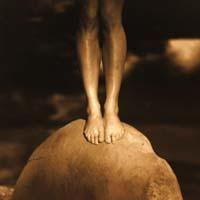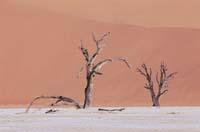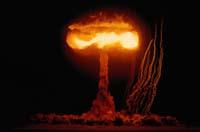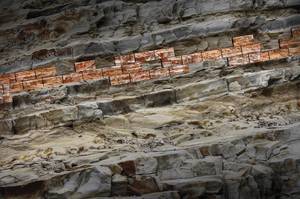Anthropocene, human epic
2008/02/09 Galarraga Aiestaran, Ana - Elhuyar Zientzia

The epochs that are characterized in the geological history of the Earth are called by a classification. The shortest time is – like the Stone Age or the Middle Ages” and the greatest is the eon. In the whole history of the Earth only two eons have been distinguished, and the current one began 560 million years ago. It is called Fanerozoikoa. Inside there are three forms, the Paleozoic, the Mesozoic and the Cenozoic, and each one has its periods. For example, the periods of Mesozoic are: Triassic, Jurassic and Cretaceous. This form ended with dinosaurs (65 million years ago), when the Tertiary period of the Cenozoic era began.
Today we are in the next period of this type, the Quaternary, in which two ephesians are distinguished, the Pleistocene and the Holocene (for 11.500 years). Pleistocene began 1.64 million years ago, when much of the earth's surface was covered with ice and glaciers. There were glaciations and interglacial periods, in which a new species appeared on the terrestrial surface: Homo sapiens.
At the end of the last glaciation begins a new epoka, the Holocene. At this time, this new species has increased and extended considerably. Over time, he developed agriculture and, about 5,000 years ago, began what we call "history", since from that time they are the first written documents.
Leaving aside the eons, forms, and periods, has the Holocene ended? For Paul Crutzen, yes, it ended in the industrial revolution. And it is of the same opinion the team of scientists of the Geological Society of London. In the article they have just published they are based on the statements of Paul Crutzen and, in addition to analyzing the changes that have occurred since the industrial revolution, they have tried to delimit the border between the Holoceno-Anthropozene epoks.
Significant changes in significant changes

According to them, during the Holocene, even before the industrial revolution, men and women left their mark on their environment, but did not alter the environment on a global scale. On the contrary, from the industrial revolution to the present day, the human population has gone from 1 billion to 6 billion, and all these people have generated significant environmental impacts.
To begin with, they have changed the terrestrial surface. On the one hand, erosion and deforestation have directly influenced agriculture and construction. On the other hand, the installation of dams in the main rivers has meant an enormous accumulation of sediments.
In addition to the terrestrial surface, the influence of human activity is easily perceived in the atmosphere. Carbon dioxide emissions are a third higher than in earlier times of the industrial revolution and experts expect to grow even more. The methane concentration has doubled since then. Both are responsible for the greenhouse effect, so the climate is changing.
Changes in the oceans are also observed. Atmospheric carbon dioxide is being acidified by ocean water, which will cause physical and biological effects. In addition, an increase in sea level is expected.
Finally, human beings have eliminated many species of animals and plants. This is taking place from the Pleistocene, especially by hunting large animals, but today it is much more evident. The species are disappearing not only by hunting, but also by imbalances in ecological systems, habitat loss and intensive agriculture. Scientists have no doubt that this will have its reflection in the fossil record.
Where is the limit?

For all this, scientists have come to the conclusion that the Holocene, although not finished, will soon end. They recognize that it is not easy to determine when Anthropocene has begun. In countries such as China and India, for example, the industrial revolution has begun later than in Western Europe, and although some propose to rely on the concentration of carbon dioxide in the atmosphere, scientists consider that the change has been too gradual, so it is not a good indicator to determine the change of epdicum.
From a practical point of view, the best solution can be based on radioactive isotopes released in nuclear tests. In the 1960s, a lot of tests were done and the radioactive isotopes that were released can be detected around the world. In addition, carbon dioxide and methane can also have natural origin, but there is no doubt that these isotopes are created by the human being.
More options have also been mentioned, but the key to the debate is not what indicators will be used to define the Holoceno-Anthropozene limit, but if the association responsible for assigning the times will accept the proposal. In any case, a topic of reflection has been raised.
Published in Gara

Gai honi buruzko eduki gehiago
Elhuyarrek garatutako teknologia





